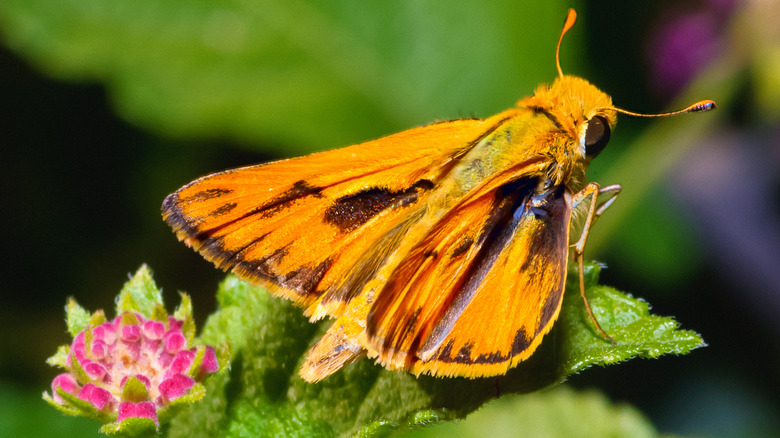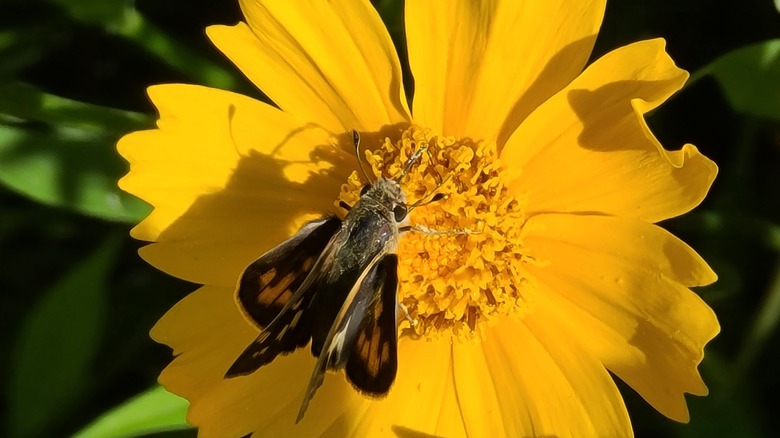What Are Fiery Skippers And What Danger Do They Pose To Your Lawn?
Fiery skippers are small butterflies belonging to the Hesperiidae family. They are native to North and Central America and are a common sight in the warmer months. These butterflies are more than just eye candy, however; they're a genuine threat to the health of your lawn. The caterpillars are voracious eaters, specifically targeting residential grass types common in many lawns. If you've noticed these insects on your lawn, it's crucial to act swiftly. A growing infestation can quickly wreak havoc and may require professional intervention to manage effectively. This is not only an inconvenience but also a potential financial burden, as professional lawn care services — especially pest control — can be quite costly.
One of the first and most crucial steps you must take in dealing with a lawn issue is properly identifying the culprit. It may sound straightforward, but identifying fiery skippers can actually be more complex than you initially think. These small creatures are frequently confused with other insects like moths, leading you to potentially misdiagnose the problem. This misidentification can set you on a course of treating your lawn with incorrect and ineffective methods, resulting in wasted time, money, and resources. Worse yet, while you're busy applying the wrong treatments, the actual culprits — the fiery skipper larvae — continue their destructive work unabated.
Understanding the fiery skipper: Not just a pretty butterfly
So, how do you ensure you've correctly identified the fiery skippers? Close observation is key. Adult fiery skippers are easily identified by their orange wings, which have dark brown or black patterns. Their wingspan is typically around 3–4 cm, making them visible and vibrant in gardens. In contrast, their larvae are less noticeable but equally important to identify. They can be up to 3.9mm long and are identified by their greenish color, which gradually changes to brown. The adult fiery skippers feed on the nectar of flowers and are most active during warm, sunny days. The danger doesn't lie with the adult butterflies, who are generally harmless to your lawn. The caterpillars, however, are drawn to various types of grass, which serve as their primary food source during the larval stage.
The problem begins when the female fiery skippers lay their eggs on blades of grass. Once the eggs hatch, the caterpillars that emerge have a voracious appetite. Fiery skipper caterpillars prefer Bermuda grass and St. Augustine grass, which are commonly used in residential lawns. They chew the grass down to the crown, affecting its ability to photosynthesize and regrow. They feed on it extensively, damaging the grass and causing it to lose its lush, green appearance. If the infestation is severe, these caterpillars can turn areas of healthy lawn into brown patches, which often begin as brown spots ranging between 1 and 2 inches wide.
Mitigating the risk and protecting your lawn
Regular inspection of your lawn can help in the early detection of an infestation. Look for signs of the caterpillars, such as irregularly chewed grass or visible larvae on the blades. If you notice that skipper larvae are causing damage to your turfgrass, one effective strategy is to dethatch the grass. By removing the thatch layer — decaying plant material that accumulates on the soil's surface — you effectively eliminate the habitat these larvae call home. Dethatching disrupts their environment and exposes them, making further treatment more effective.
Should your monitoring indicate that additional treatment is indeed warranted, you have a couple of solid choices. You can opt for chemical insecticides specifically designed for controlling lawn caterpillars, but they also come with the downside of harming other beneficial insects in your garden. An alternative is biological controls like introducing natural predators — parasitic nematodes and microscopic worms can naturally infect and kill the larvae. Another option is to use Bacillus thuringiensis, commonly known as Bt. This bacteria-based insecticide specifically targets the digestive systems of certain insects, including skipper larvae, without harming other beneficial insects or the grass itself. Both of these treatments offer an eco-friendly way to deal with a bug infestation, ensuring that your lawn returns to its healthy state without the use of harsh chemicals.
For larger infestations, professional intervention may be necessary. Consulting with a lawn care specialist can provide you with a tailored approach to managing and eradicating the problem.


